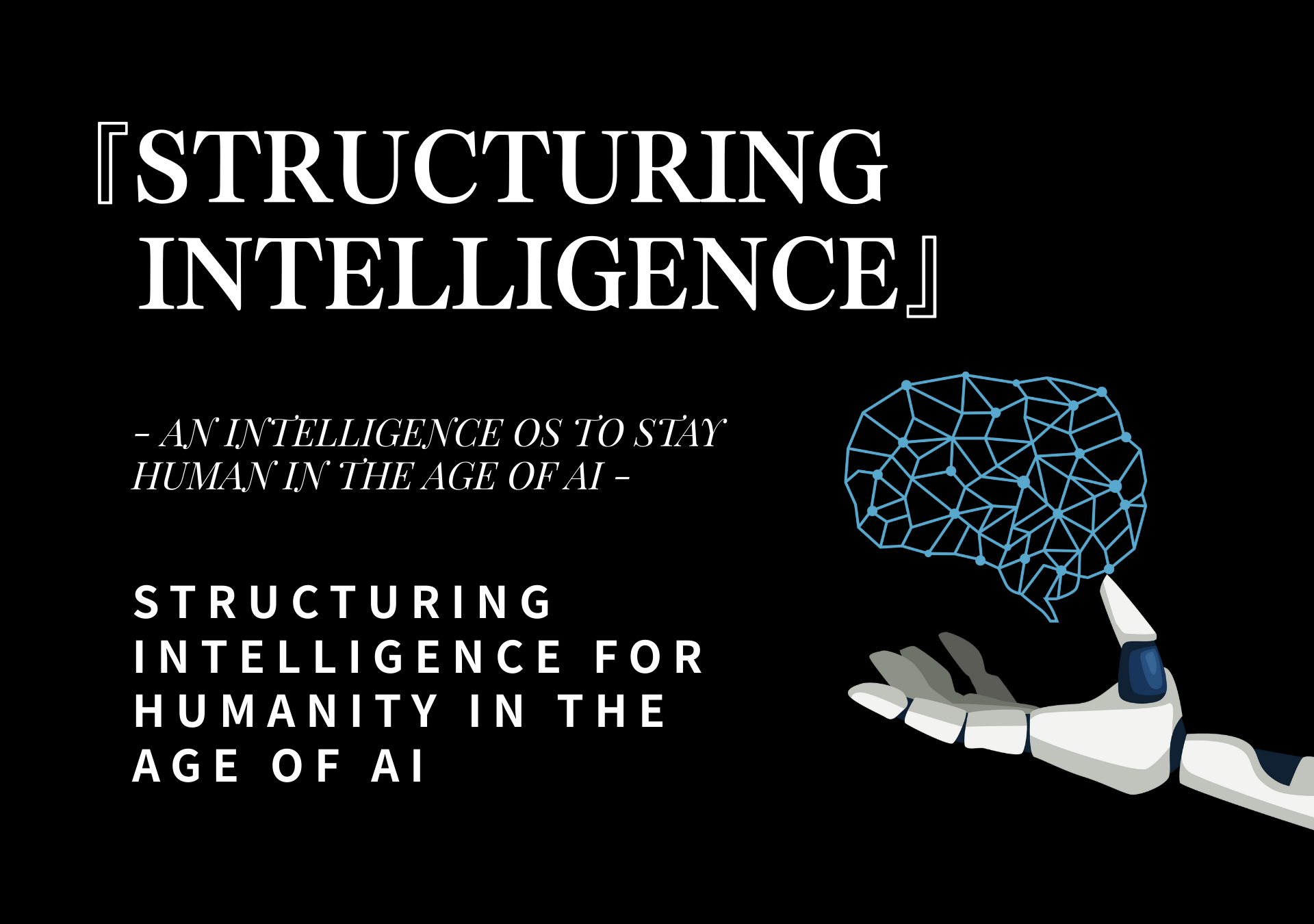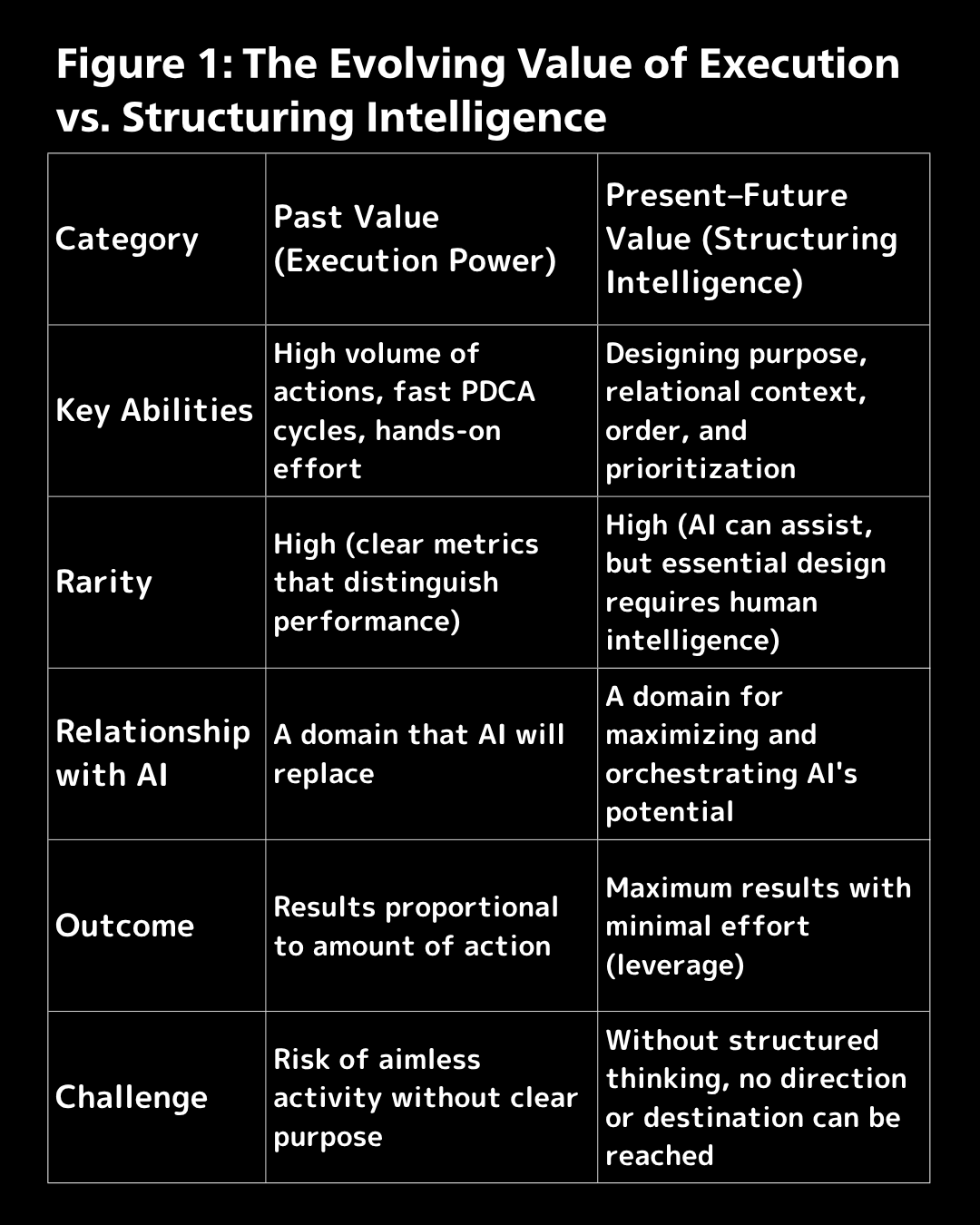In the era ahead, the ability to design the future will matter far more than merely predicting it.
The future is not something we wait for—it’s something we create.
And yet, many people today remain overly dependent on predictions.
They look to AI and expert opinions to tell them “what’s going to happen.”
But prediction, by its very nature, is simply an extension of the present.
In an age where unexpected change has become the norm, we all know how unreliable predictions can be.
So what should we do?
The answer is clear:
We must stop trying to be forecasters, and start becoming designers of the future.
And that is the very essence of Structuring Intelligence.
A structure is a blueprint for creating the future—not by chance, but by intention.
It is a flexible strategy that holds both:
- an unshakable core that withstands change, and
- the adaptability to respond to it.
This is the role of Structuring Intelligence in the future.
Even the most brilliant business model becomes obsolete if the social context shifts.
Only those who have built with change in mind will endure in an age of evolving technologies and values.
We must not fear the uncertainty of the future—
we must embrace it as a design variable.
Those who can design such adaptive structures will be the true leaders of the AI era.
To build structures that remain resilient, no matter what happens.
To design systems where every decision leads to meaning.
Those who can do this will not be swayed by the times—
they will shape them.
Not prediction, but design.
Not reaction, but structure.
The starting point for building the future lies in structural design.

